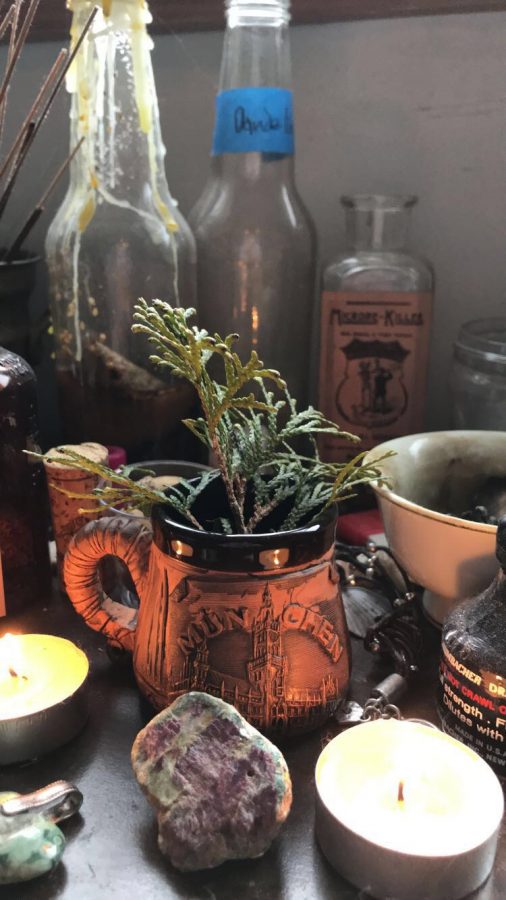Paganism? In MY Christmas?
It’s more likely than you think!
Photo by Grace Schumann
A yule offering of pine to the goddess.
December 22, 2017
These days Christmas has become a cash cow for toy stores and retailers, and it is not hard to come by someone harping about how capitalism is taking the ‘Christ’ out of ‘Christmas’. Ironically though, Christ was never in Christmas to begin with. Christmas was just the Catholic church’s attempt to help assimilate northern pagans into Christian traditions.
The original holiday is called Yule, and is actually placed on the winter solstice. Since paganism is more of an umbrella term for different variations of the Wicca faith, exactly how Yule is and was celebrated varies from sub-faith to sub-faith.
The Pagan Library cites that in Celtic paganism, Yule is the celebration of the rebirth of the Oak King, the Sun King, and The Giver of Life. Celtic children went from house to house and gifted each apples for the goddess and immortality, oranges for joy and health, and boughs of evergreen for immortality. Each house had mistletoe and holly hung to represent the seed of the divine.
In Eclectic Witchcraft, celebration and history varies from person to person. It is agreed however, that Yule is a time for rebirth and celebration. Sacred Earth Journeys lists common symbols such as the colors red for survival and wisdom, green for prosperity and growth, white for purity and birth, blue for patience and truth, and yellow for success and happiness, pine logs for protection of hearth, and snowdrop flowers for hope.
In the general faith of Wicca however, there is a common story. According to “Everything You Need To Know About Wicca” by Geraldine Giordano, the goddess gives birth to the horned god, the first ever male born unto the world. The following is a version according to the Pagan Library.
The goddess had birthed daughters and oak trees a many, but never a boy. The baby boy however, could not become warm, even with all the heat from the animals and his sisters, he was cold and sickly. The First grandmother was so worried she began to weep. In an attempt to hide her tears, the grandmother ran into the forest. The snow in the forest was deep and untouched, so the grandmother became stuck. An owl came to her rescue and brought her to a clearing where the goddess’ first born was, the sacred first oak. Yet, when the grandmother arrived the Oak was destroyed into branches and logs. Rushing to kneel by her grandchild, frozen tears spilled unto the grandmother’s cheeks. A wolf came to the grandmother’s side and whispered secrets into her ear. The grandmother solemnly nodded and took a log from the First Oak.
When the Grandmother returned to her daughter and grandchildren, she used the wolf’s secrets and the Oak’s gifts to create the First Fire. The goddess brought the baby boy close to the fire, and he began to open his eyes and coo. The son grew into the horned god and had many sons of his own. Now on the longest night of every year Wiccans everywhere gather a sacred Yule log and light a fire to remember the birth of God, and that no matter how dark or cold the nights become The horned god will always be reborn and with him, the Sun.
The parallels between the birth of Christ and the story of the first Yule hold common ground, not only due to the Catholic church’s attempt to assimilate the northern pagans but also because the story of history is somewhat blurry when it comes to paganism.
The History channel’s website puts it best-
“By holding Christmas at the same time as traditional winter solstice festivals, church leaders increased the chances that Christmas would be popularly embraced, but gave up the ability to dictate how it was celebrated. By the Middle Ages, Christianity had, for the most part, replaced pagan religion.”





